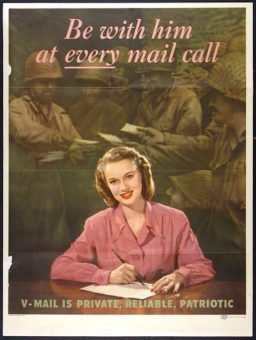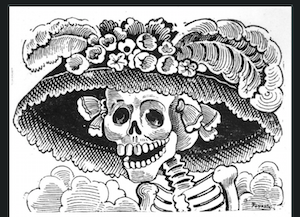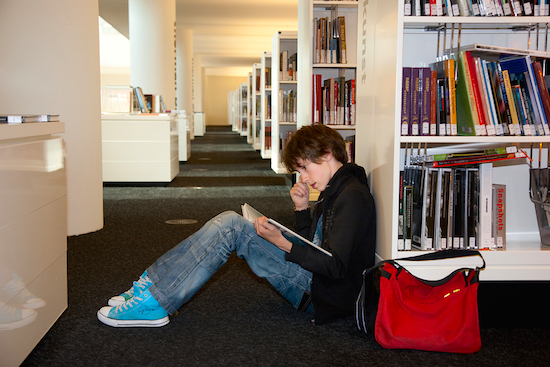Why Teachers & School Librarians Should Unite!

When I taught middle school English, one of my favorite topics to teach was historical fiction. I have always had a fascination with history, and anytime I could incorporate what my students were learning in their history class into what we were studying in English class, I considered it a win.
During my first year teaching seventh grade English, our study of historical fiction came at the same time as my students were learning about World War II in history. I wasn’t sure how I wanted to approach it at the time, but I was thinking about it as I entered an English department meeting.
Getting started with my school librarian
The first person to speak at our meeting was our school librarian, who introduced us to one of the school-subscribed databases. As she showed us some of the features, I instantly perked up and had the answer to my pondering. It contained so many primary sources – especially of images from World War II. I knew this could help me teach historical fiction, but I needed some more help in making the ideas become a reality.

We worked together in teaching this to my students; she showed them how to access the database and the difference between primary and secondary sources, while I guided students through using their images as inspiration and explained the particulars of writing historical fiction.
During the assignment, students were excited and motivated, and I was so grateful for the librarian’s teaching! Not only did students learn in a different way, but I learned about once-unknown resources that helped my teaching and my students’ learning.
Our study of historical fiction was so much better because I asked my school librarian for help. This was the beginning of a wonderful relationship. In fact, she inspired me to become a school librarian, too.
Library support across the content areas
Since becoming a middle-school librarian a few years ago, I have collaborated with just about every content area. I have promoted books from our school library to students in 8th grade science classes through book talks that were relevant to a project or unit they were studying at the time, such as energy or elements.
At a social studies meeting, I shared the features of the website Padlet (formerly WallWisher), which inspired the teachers to have students create their own gathering of online resources on a research topic related to inventions. Students shared their project links with their peers, who reviewed them and provided feedback before students submitted their final project to the teacher.
I have collaborated with a Spanish teacher to enhance her students’ understanding of Dia de los Muertos by having her students work in our makerspace to create their own calaveras, or skeletons, in honor of a loved one, while she taught them about the cultural origin of Dia de los Muertos and the artist Jose Guadalupe Posada.
Also, I have collaborated with the art teacher, demonstrating for her Digital Art class how to locate images online labeled for reuse and how to license their own work under copyright. Then she had students manipulate those found images to create their own art.
In every instance, teachers were grateful for the support, students enjoyed learning something new, and I felt like I had contributed something to students’ learning that might not have been there otherwise.
Schools achieve more with certified librarians
While multiple studies have shown that students who attend schools with certified school librarians achieve more than those who attend schools without librarians (AASL, 2013), it is unfortunate in today’s society that not all states or school districts value library contributions to the learning environment.
The skills librarians teach can enhance students’ understanding of topics already covered in the classroom. Librarians can also teach students critical skills important in every content area, such as asking good research questions, determining credible sources, searching the internet more effectively, and avoiding plagiarism when creating a project, presentation, or research paper.
In addition to teaching, there are so many additional ways librarians can enhance instruction in all content areas. For example, librarians can provide books and other resources for a unit, so if students finish their work early, they can choose one of these resources to continue learning about the topic.
Also, librarians can access information and resources that teachers may not have time to locate, such as current news articles that relate to your students’ study of DNA, examples of bias in the news, or fresh ideas for an upcoming civil rights project.
Librarians can create displays in the library related to what you are teaching; for example, students may not know the library has illustrated books on the Civil War sitting on the shelf, but they may consider checking out one of those visually engaging books if it is on display, thinking hey, I’m learning about this in social studies right now. All it would take is mentioning to your librarian that your classes are currently learning or getting ready to learn about that topic.
Librarians can boost tech effectiveness
Finally, one of my favorite ways to collaborate with teachers is modeling and supporting new technology use. My school is a 1:1 school and our teachers have a range of familiarity with new, county-approved tools in their classrooms.
When a student news site was approved for use two years ago, I presented at department meetings, outlining its features and helping teachers set up with their own accounts. Then I created digital note-taking sheets and exit tickets for when they introduced the site to their students. Now that site is used consistently across departments with all students, to great success.

If you have other ideas about working with your librarian, just ask! Some teachers are hesitant to ask for help because they think librarians are too busy or that they are a burden to us. Others don’t like to admit they need help with something.
To be honest, we are just waiting for teachers to invite us, suggest an idea, or bring us a problem they think we can help solve.
When teachers ask me for anything, I typically stop whatever I am doing and their need becomes my top priority. After all, school librarians work with everyone in the school – both teachers and students. If I can help students by helping teachers, all the better.
Working with your librarian

Of all the responsibilities I have as a librarian, the role of being an instructional partner with our teachers is my favorite, because I can support what is going on in every classroom. Partnering with teachers might be your librarian’s favorite thing too!
WWII poster image: Smithsonian National Museum of American History
___________________
Rachel Grover is a middle school librarian in Fairfax County, Virginia, and the current director-elect for the Potomac region of the Virginia Association of School Librarians. A 2016 nominee for the Potomac Region School Librarian of the Year, she taught fifth grade for two years before beginning life as a middle-school English teacher in 2009.
In 2014, Rachel “ran to the dark side” and became a school librarian, finding “a dream job I didn’t even know was my dream!” Connect with her on Twitter @rgrov1013 or visit her blog: Grover’s Corner of the Library.


































Thank you, Rachel Grover, for reaching out to our classroom teacher colleagues. School librarians are prepared and ready to serve as instructional partners. All across the U.S., school librarians should be reaching out as you are… But what a fine day it is when a classroom teacher makes the first move and approaches a school librarian to co-plan and co-teach!
This is a welcome development between teachers and librarians. Combined efforts will make a difference in teaching and learning. We should take a cue from this.